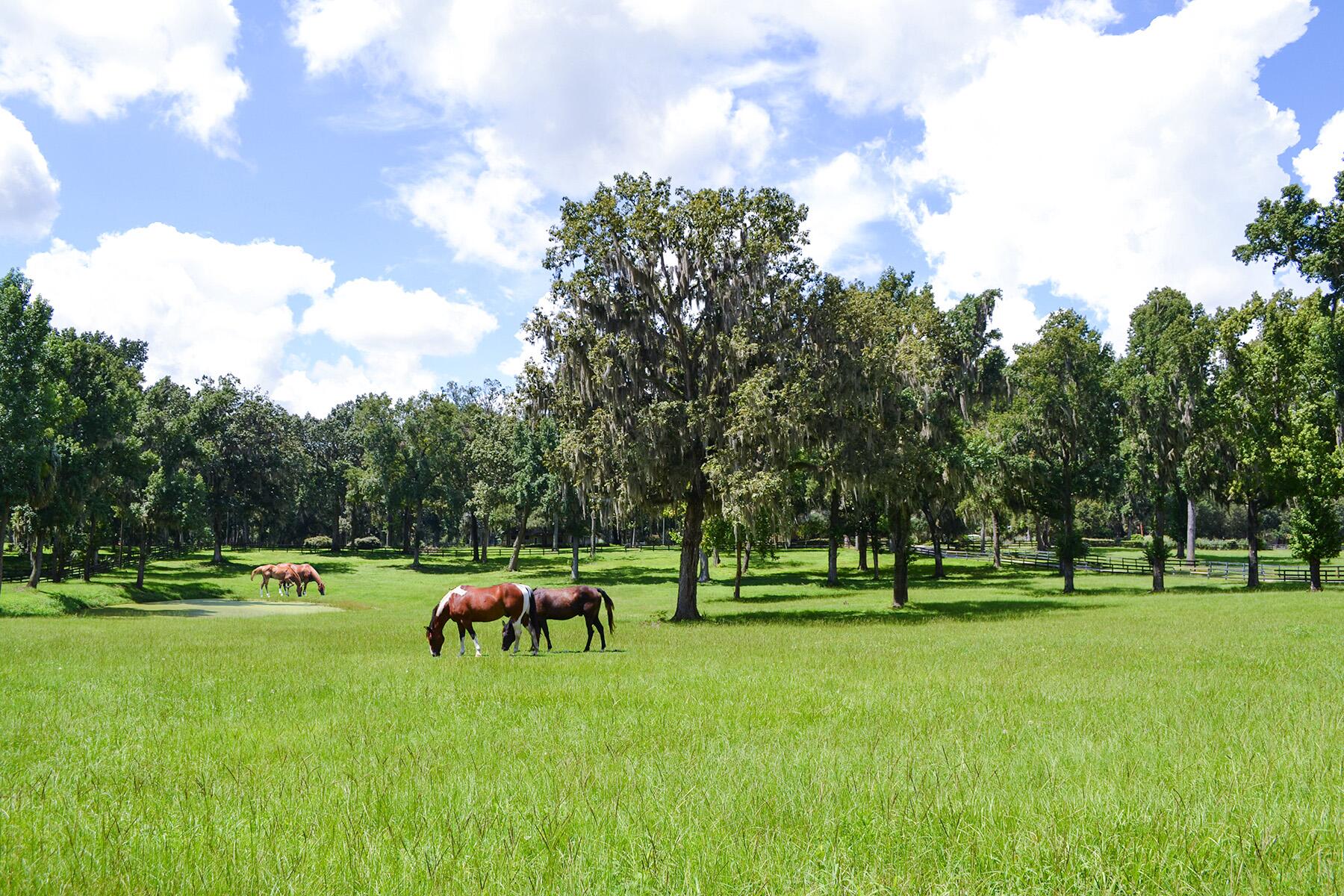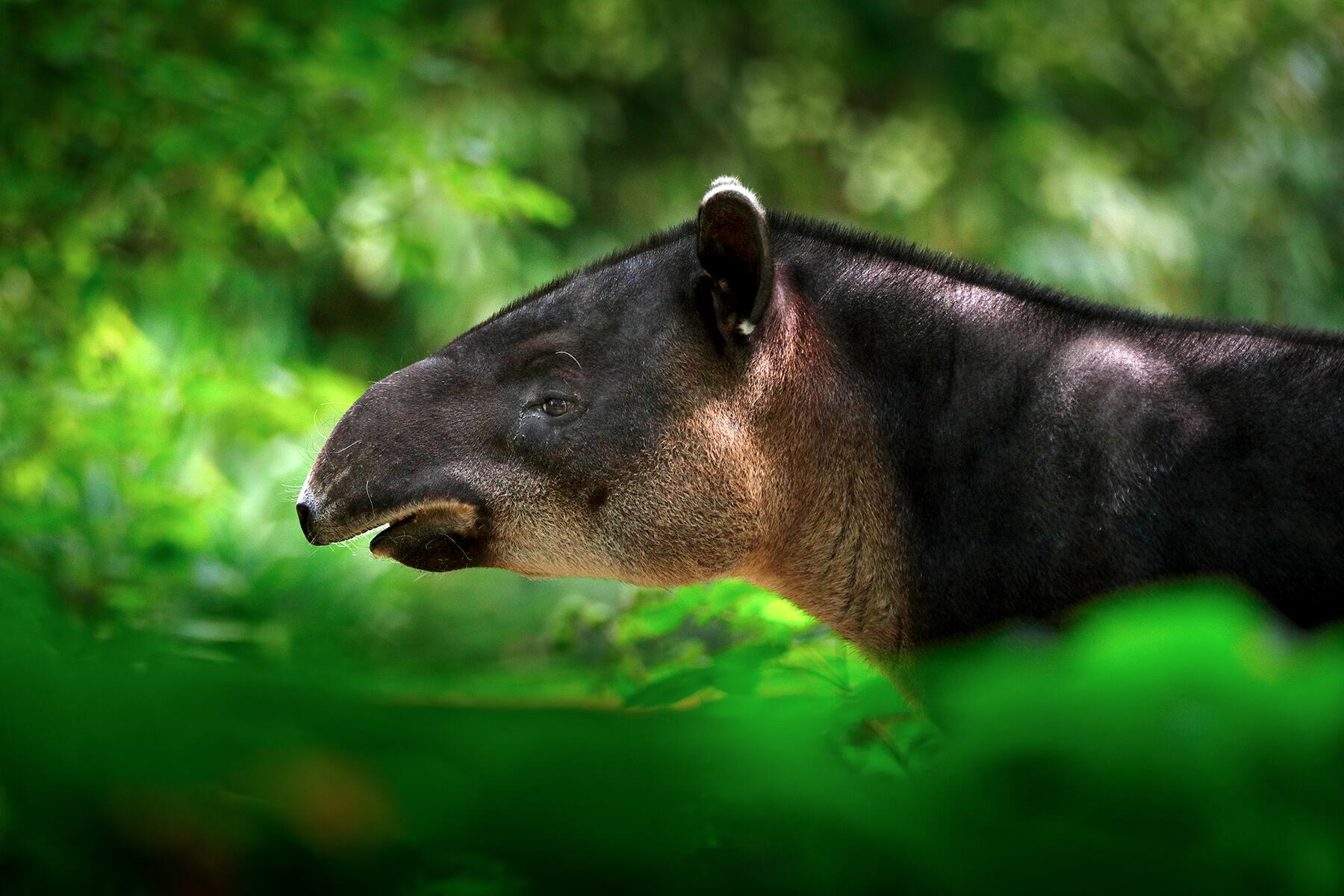White-sand beaches and turquoise waters aren’t the only sights in the Yucatan of southern Mexico.
Out of the world’s 170 countries, only 17 account for the majority of the planet’s biodiversity. Mexico is one of these “megadiverse” nations, home to more than 200,000 species—more than 10 percent of the earth’s total biodiversity. And the Yucatán peninsula, located on a broad limestone platform in the southeast of Mexico, is an especially prolific place for mammals, reptiles, and amphibians.
According to Katia Cordourier, director of the Fundación Ecológica Eco-Bahía, the region’s rich variety of animals is attributable to “the temperature, with an average that oscillates between 68 and 86 degrees, together with rain, which has an annual average accumulation of 39.5 inches.” The Yucatan also possesses the second-largest forest land in Latin America, as well a range of mangroves, savannahs, coral reefs, and coastal lagoons—the ideal home for an array of fantastical animals, from the unexpectedly adorable hairy dwarf porcupine to the vibrant Yucatan parrot to the imperial puma.
Top Picks for You
Sereque
Quite possibly the world’s most charming rodent, the sereque, or agouti, is small—about the size of a domestic cat—and nimble, with a pink-tipped nose that twitches with curiosity. Despite its delicate-looking legs, it can often outrun predators and jump nearly six feet. The sereque spends most of its day foraging for nuts, seeds, tubers, and fallen fruits. Considered a keystone species, agoutis aid in tree reproduction by burying seeds. Whether they forget where they placed them or just enjoy hiding snacks from their friends is open to scientific debate.
Conservation Status: The reddish-haired Central American sereque is common. Its dark-haired cousin, the Mexican sereque, is endangered.
INSIDER TIPSereques are diurnal, and you’ll most often find them hanging around resorts at the same time as people.
White-Nosed Coati
It’s a raccoon. It’s a lemur. It’s a weasel-mink? If any of these descriptions apply, you’ve probably just encountered the white-nosed coati, also called coatimundi or tejón. Sweet-faced and always in motion, the coati—a relative of the raccoon—is easy to recognize by its masklike markings and its long, ringed tail. This appendage is usually carried in a fluffy upward curve, a “follow-me” signal to others in its group. Speaking of groups: coati females and juveniles often travel in bands of 20 or more, with rambunctious kiddos running, tumbling, and ambushing one another.
Coatis are clever escape artists and freakishly jointed, with ankles that can turn 180 degrees. This allows them to scamper down trees head-first. The ancient Maya believed coatis could talk and had mystical powers. The animal was so venerated that Maya artisans often created vessels and statues in their shape.
Conservation Status: Threatened
INSIDER TIPAnother diurnal animal, coatis are most often found in areas with lots of vegetation—be it jungle or garden. The sprawling grounds of Bahia Principe Grand Tulum are home to dozens of coatis, who will often pose for a photo before scampering off to catch up with their group.
Recommended Fodor’s Video
Black Spiny-Tailed Iguana
Though you’ll find several different species of iguana along the Riviera Maya, the black spiny-tailed iguana is the most regal of the lot. The name of its genus, Ctenosaura, comes from the Greek words for lizard and comb, a reference to the spikes along its back and tail. It’s both the largest and fastest species in its genus, growing up to four feet in length and running in bursts of up to 21 mph. Though the spiny-tailed iguana is mostly a peace-loving, herbivorous reptile, it may eat smaller animals, including birds and hatching sea turtles, and strike with its teeth or tail if threatened.
Conservation Status: Common
INSIDER TIPThese creatures are excellent rock climbers. Pay a visit to the ruins at Tulum and you’ll find them sunning themselves on or beside the many stone walls and structures.
White-Collared Peccary
While they may look like wild pigs, white-collared peccaries are actually classified in their own genus, Tayassuidae. Important seed dispersers, they’re one of three species of peccaries that are native to the Americas. Clocking in at about two feet tall and 35 to 60 pounds, the white-collared peccary is a voracious eater who’s constantly on the lookout for ripe fruit, tubers, and grasses.
Pecarries travel in groups and camp out in burrows. They use a strong musk, released via scent gland, to mark territory or indicate alarm.
Conservation Status: Common
INSIDER TIPWhite-collared peccaries are mostly diurnal and are currently classified as a species of “minor concern,” due to the destruction of habitats and hunting by people and wild cats. While you’ll rarely find them outside of the jungle, you can get a closer look by visiting the Akumal Monkey Sanctuary, which rescues a number of different animal species.
Altamira Oriole
You can’t miss the flame-colored plumage of this large native songbird. Wary and watchful, the Altamira oriole prefers to forage for insects and berries in dense trees and shrubs. Often heard before it’s seen, it produces a series of sharp whistles and noisy chattering. The Altamira oriole’s large nests take weeks to build and can be up to two feet long. Females are the nest builders and incorporate moss, palm fiber, weeds, and the feathers and fur of other animals in their masterworks.
Conservation Status: Common
INSIDER TIPDiurnal, Altamira orioles prefer to inhabit the edges of forests, near streams or other water sources. They’re easy to spot at resorts, where their brilliant color stands out against the foliage of coconut and palm trees.
Loggerhead
Though the loggerhead is found worldwide, the soft sands and warm waters of the Yucatan are prime real estate for egg hatching. On average, this marine reptile measures a little more than two and a half feet long and weighs nearly 300 pounds. Late bloomers, loggerheads reach sexual maturity once they’ve passed drinking age, and can live well over half a century.
A peace-loving creature, this species of sea turtle has spring-loaded jaws that can make a meal of hard-shelled prey in just a few bites. It’s a critically-endangered species, both because of the destruction of beach habitats—which have been co-opted by us humans—and by accidental capture in fishing nets.
Conservation Status: Endangered
INSIDER TIPThe bay at Akumal, a Mayan word that translates to “place of the turtle,” is one of the most important loggerhead nesting sites in the Americas. Before attempting to visit a nesting/hatching site, contact one of the local preservation groups. Fundación Ecológica Eco-Bahía often organizes public viewings of newborn turtles’ voyage to the sea—without disturbing their habitat.
Tapir
One of the most unusual-looking animals you’ll come across, the tapir seems like it was stitched together out of spare elephant and wild boar part. Baird’s tapir is the most common type in Central America. Despite weighing up to 800 pounds, these mammals are experts at ninja-quiet maneuvering through the jungle, using their trunklike proboscis to access plants in tricky spots. They spend a considerable amount of time underwater—both to stay cool and avoid predators—where they use their proboscis like a snorkel to breathe. Sometimes known as the “gardener of the forest,” the tapir plays a crucial role in seed dispersal for more than 200 plant species.
Conservation Status: Endangered
INSIDER TIPTapirs are nocturnal and crepuscular, and surprisingly stealthy, given their size. For the best chance at seeing them, visit the Sian Ka’an Biosphere Reserve, a UNESCO World Heritage Site about 10 km south of Tulum.
Ocellated Turkey
Think of this bird as the glammed-up cousin to the North American wild turkey. Though it has a similarly bosomy shape and long tail, the ocellated turkey is a bit smaller than its U.S. counterpart and has a light blue head and neck dotted with bright orange or red wartlike growths. Its body feathers are a riot of iridescent blue, green, and bronze, and its blue-gray tail feathers have circular blue markings tipped in rust. These give the bird its name—oculus is Latin for “eye.” It’s sometimes called by the same Spanish moniker, pavo real (“royal turkey”), as the peacock, thanks to the feathered eye’s resemblance to the markings on a peacock’s tail.
The Maya believed that turkeys were vessels of the gods, and included them in a variety of iconography. Symbols of power and prestige, ocellated turkeys were domesticated during the Mayan era so that they could be included in religious ceremonies.
Conservation Status: Threatened
INSIDER TIPThese diurnal animals can frequently be found in forested areas, foraging for berries, leaves, seeds, and insects. Spend time at the archaeological ruins of Cobá, and you’ll likely encounter small groups on one of the site’s ancient roads.
Red-Eyed Tree Frog
With its bright green body, vivid blue-and-yellow sides, and button-shaped orange toes—plus the huge ruby-colored orbs from which it gets its name—the red-eyed tree frog is hard to ignore. During the day, this amphibian naps, sticky feet glued to the undersides of leaves, with its eyes closed and legs pulled in tight, making it look like a nondescript green blob on the vegetation. When provoked, it flashes its “startle coloration,” which scientists believe deters predators just long enough for the frog to make a quick escape.
The red-eyed tree frog is small—just two to three inches long—and an expert hunter that sneaks up on flies, moths, and crickets, and snaps them up with its absurdly long tongue. Though this frog, which can be found throughout Central and South America, is a favorite within the amphibian trade, a home terrarium is no substitute for its wide-ranging natural territory.
Conservation Status: Common
INSIDER TIPA nocturnal critter, the red-eyed tree frog is much less active during the day, but can be found in trees, large puddles, or pools in the forest, especially during or after a storm.
Margay
Jaguars, pumas, and ocelots may be the most famous big cats of the Yucatan, but the most unusual is the margay. In places where you’d find the other big cats prowling on the ground, look up and you might just catch a glimpse of the margay hunting in the trees for lizards, insects, birds, and even small monkeys.
Sleek, strong, and flexible, the margay can rotate its hind legs 180 degrees, allowing it to race down a tree headfirst. It can also grasp onto branches with its paws, and hang or move upside down like a sloth…only much faster. While not very large—between nine and 20 pounds, and about 34 to 52 inches long—the margay has massive amber eyes that appear to be lined with coal—all the better to see its prey in the dark. The margay’s dazzling coat of spots and rosettes has made it a favorite of the illegal fur and exotic-pet trade.
Conservation Status: Threatened
INSIDER TIPBecause wild margay populations have dwindled, your best chance of seeing one is at the Akumal Monkey Sanctuary.





Any reason you all at a travel website/publisher miss basic errors? Since when did the Yucatán move to Northwest Mexico? Simple errors like that cause one to pause at the veracity of content.
juss sayin'
I'm confused, the first paragraph says it's in the south east. Did I miss a reference to the north west later inthe article.